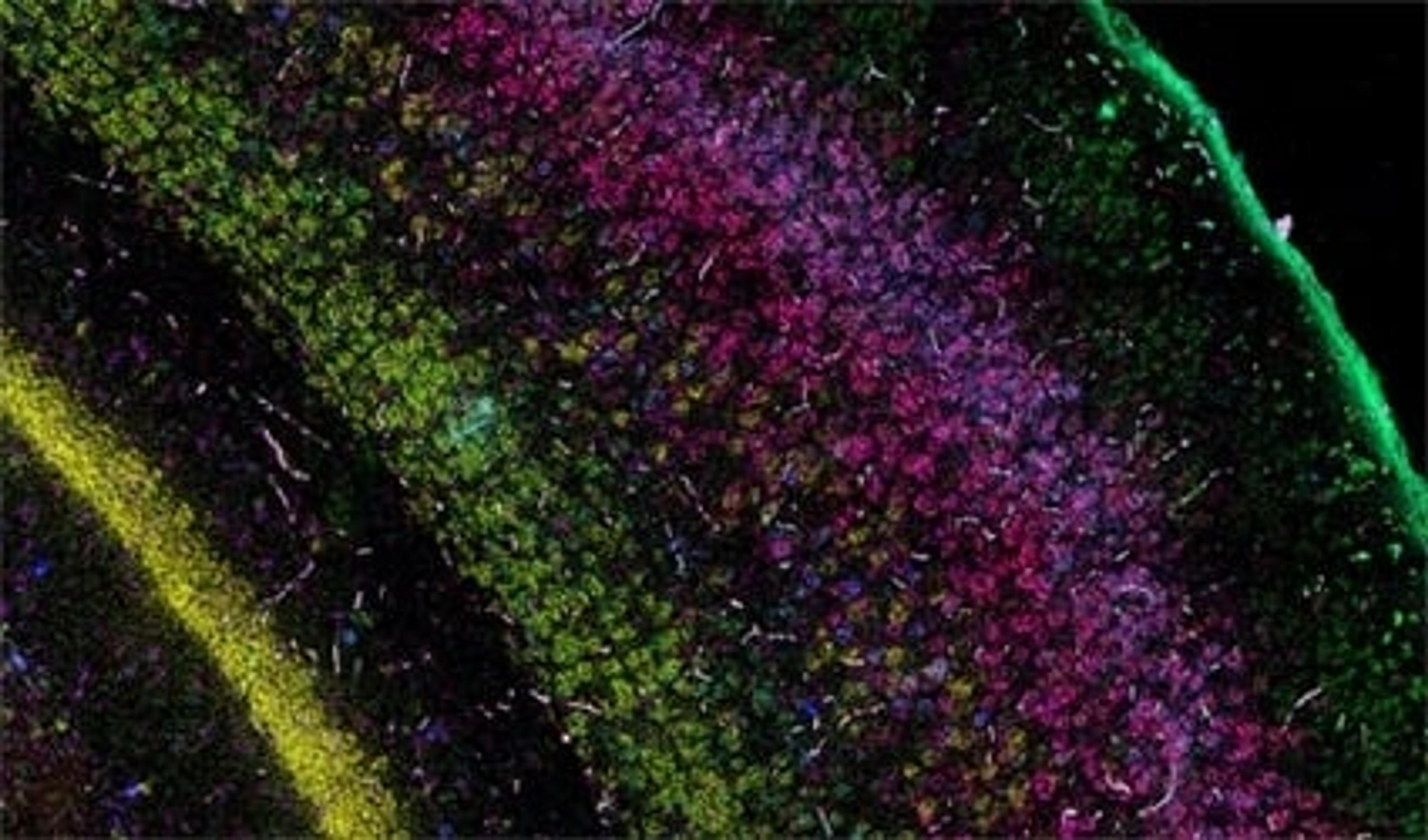UCLA neuroscientist reveals how RNAscope HiPlex assays can help improve our understanding of vision
In this SelectScience interview, Dr. Arlene Hirano discusses the advantages of using RNAscope HiPlex assays to explore the mammalian retina
2 Apr 2020
In this exclusive interview, we speak with Dr. Arlene Hirano, leading neuroscientist at David Geffen School of Medicine at University of California, Los Angeles (UCLA), to find out more about her research into the visual processing of the mammalian retina. Collaborating with Prof. Nicholas Brecha and Prof. Steve Barnes, Hirano aims to broaden our understanding of vision by exploring the structure and function of the outer retina, with a focus on horizontal cells, and how HiPlex assays from Advanced Cell Diagnostics help achieve her research goals.

A key component explored within this work were horizontal cells. These cells are the inhibitory interneurons that send feedback inhibition to photoreceptors, feedforward inhibition to bipolar cells, and autaptic signals to themselves. Horizontal cells function to mediate lateral inhibition between photoreceptors, contributing to the antagonistic receptive field surrounds found in downstream visual neurons. “The lateral inhibition shaped by horizontal cells impacts our ability to compare two adjacent regions of the visual world, which is critical for sensing contrasts, edges and the sharpness of vision’,” says Hirano. Despite this, the cellular mechanisms that govern the contribution of horizontal cells to receptive field properties, such as bipolar and ganglion cells, have proven difficult to determine. As Hirano explains: “This is because there is a lack of fundamental information available on horizontal cell signaling.”To understand the visual processing of the mammalian retina, Hirano and her team have focused on characterizing the synaptic and cellular mechanisms underlying how a visual signal is formed at the first synapse of the visual system. “This photoreceptor synaptic complex is significantly important since it’s the initial site of visual processing and signal transfer from photoreceptors to downstream visual neurons,” explains Hirano.
GABA receptors
Hirano and her team have developed a model to demonstrate how feedback inhibition from the horizontal cells to photoreceptors operates, at both the cellular and synaptic level1. ‘‘Integral to the model is the role of the GABA (Gamma-aminobutyric acid) receptors present on horizontal cell endings, where the flux of bicarbonate buffer of the GABA receptor within the synaptic cleft is key to its action in feedback inhibition,” says Hirano. “Interestingly, unlike many areas of the central nervous system, the early signaling in the retina relies on graded membrane potential changes, rather than the typical firing of action potentials. We have determined that there is a tonic GABA presence in the outer synaptic layer that changes in a graded manner to exert its effects.”
The study found that at least one component of the horizontal cell GABA receptor is the GABAA receptor rho2 subunit, located at the horizontal cell endings. The study also concluded that GABA receptor subtypes responsible for these tonic actions at the synapse between photoreceptor and horizontal cells remain undetermined. It also remains to be tested as to whether other commercially available antibodies to extrasynaptic GABAA receptors and GABAA receptors that contain rho-subunits function to localize GABAA receptors in the tissue1.
The lateral inhibition shaped by horizontal cells impacts our ability to compare two adjacent regions of the visual world, which is critical for sensing contrasts, edges and the sharpness of vision.
Dr. Arlene Hirano University of California. Los Angeles
‘Beautiful’ technology
Key to Hirano’s research are the HiPlex assays from Advanced Cell Diagnostics. “The beauty of the RNAscope HiPlex assays is that Advanced Cell Diagnostics can generate verified probes for all GABAA receptor subunits, as gene sequences are known. There are up to 19 different GABAA receptor subunits that combine to form pentameric ion channels,” Hirano continues. “With an array of up to 12 probes at a time, I have investigated whether a given GABA receptor subunit is expressed at the mRNA level in the same horizontal cells1. This data will direct our studies toward determining what subunits comprise the ion channel in order to characterize its function and pharmacology.”
When it comes to features, Hirano outlines the benefits of the RNAscope assays: “A notable feature of RNAscope assays is that it is possible to combine the RNAscope assays with immunohistochemistry. I have used antibodies and cell markers of horizontal cells, such as calbindin, to independently identify cells within the middle cellular layer of the retina.” This ability to mark the cell bodies and processes of horizontal cells has been particularly useful for localizing the RNAscope HiPlex signal to the sparsely distributed horizontal cell bodies in a given retina cross-section.
In regard to quality, Hirano has found that the RNAscope HiPlex assay produced bright and clear puncta that made imaging easy—and should the need arise, help is on hand. “The support from Advanced Cell Diagnostics from the sales and technical departments has been outstanding,” Hirano tells us. “They truly endeavor to get the RNAscope assays working for you.”
Future outlooks
Looking ahead, Hirano is excited about the prospect of studying different subcellular localizations of GABA receptor subunit mRNAs. “The majority of the RNAscope HiPlex assay signal occurs around the cell bodies since this is the cellular region with high mRNA levels,” she says. “However, some messenger RNA can also be found at synapses and in processes of neurons. The ability to combine the RNAscope assay with immunohistochemistry will facilitate these studies.”
Hirano predicts the ability to multiplex several probes with the RNAscope HiPlex assay could prove useful in identifying unique cell subtypes by molecular signatures, deriving from the plethora of genes arising from single-cell RNAseq data. Interestingly, in the retina, the amacrine cell type is thought to be comprised of 70-100 different subtypes, and the ganglion cells, 20-40 subtypes. Hirano expects RNAscope HiPlex assay data will be integral to illuminating how different neural circuits parse our visual world.
References
1. Grove JCR, Hirano AA, de Los Santos J, McHugh CF, Purohit S, Field GD, Brecha NC, Barnes S. Novel hybrid action of GABA mediates inhibitory feedback in the mammalian retina. PLoS Biol. 2019


